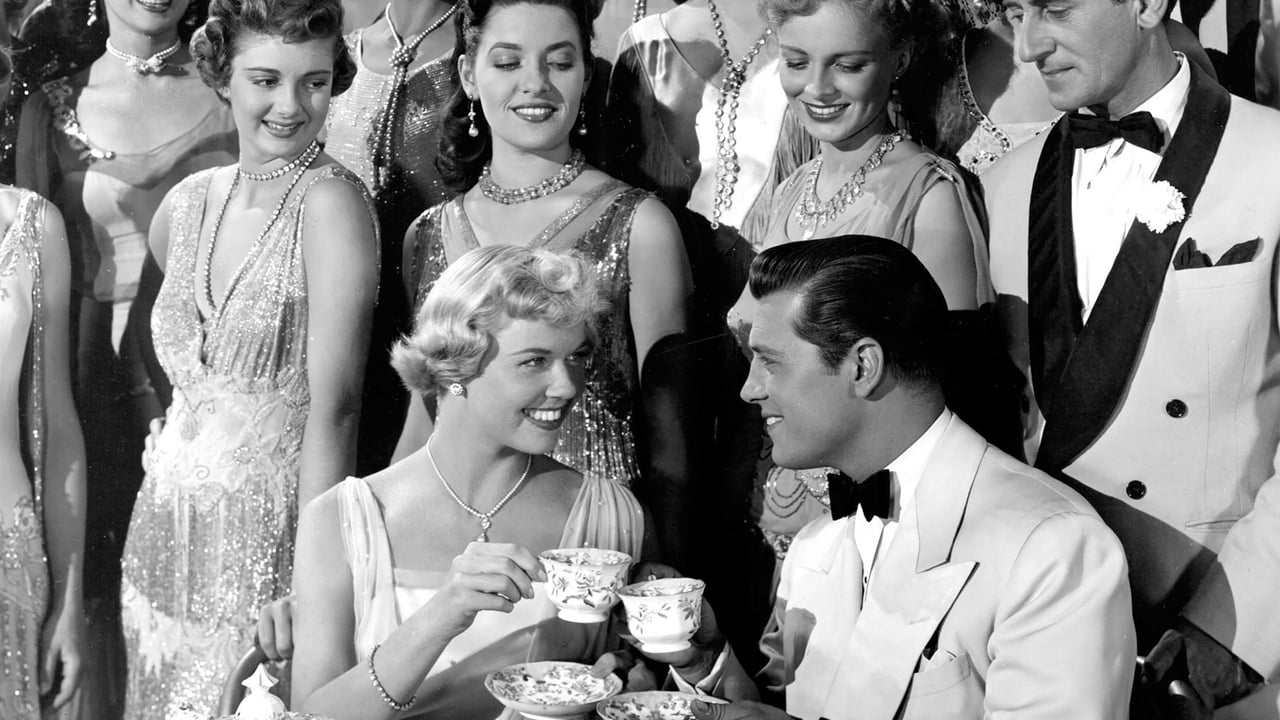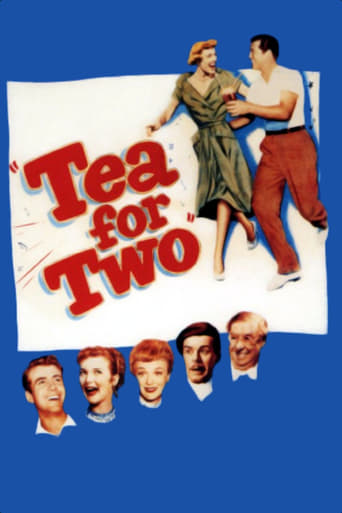



A Disappointing Continuation
In truth, there is barely enough story here to make a film.
View MoreIt is neither dumb nor smart enough to be fun, and spends way too much time with its boring human characters.
View MoreThe storyline feels a little thin and moth-eaten in parts but this sequel is plenty of fun.
View MoreAs many other reviewers have said, I cannot fault this movie or similar movies of its kind from that era. I'm glad these wonderful singers/actors have passed (most of them) and aren't around to see the trash that is now. Thank you for the wonderful films you made that continue to be a pleasure to watch. People who lived then we're so lucky. Sheer beauty and talent. Thank youJust picture fun for everyone A joy for you its tea for two :) for capturing and rapturing romance. You'll love the charms of our own Doris Day and popular songs sung by Gordon Macrae :) while gene nelson dances and eve Arden glances :)
View MoreQuite a combination of musical, dramatic and comedic talents, who work well together in this musical drama, about the trials of trying to put on a '20s-themed musical show. About the only things salvaged from the original '20s play "No, No, Nanette" are some of the musical numbers, including the title song, and the factor of money problems. The dominating element of Doris(as Nanette) having to avoid saying "Yes" for 48 hr., to induce Uncle Maxwell("Cuddles" Sakall) to hand over $25,000 that her father left her, at uncle's discretion, is a clever, if very silly, invention, which leads to various embarrassing and comedic situations. Thus,for 48 hr., she becomes 'No, No, Nanette', and it's decided to name the play such. The audience is in on the irony that all this craziness is probably for naught because Nanette's inheritance just evaporated in the '29 stock crash, but uncle is afraid to tell her. She has promised the show's producer, played by Billie De Wolfe, that she will finance his show with this money, if she gets the female lead part(sounds familiar).Singer Gordon MacRae and Gene Nelson, known especially for his dancing, vie for top man in Nanette's life, replacing Billie. Besides multitalented Doris, we have 3 well-established comedy specialists in Billie, Eve Arden and "Cuddles", all very different types of comedians, and all very recognizable physically. From reviewer comments, I know that not everyone appreciates their screen personas. I can sympathize with this. Each of these 3 can get to be wearing if they get too much screen time. Eve Arden knocks off one sarcastic putdown after another, just as she had in most of her roles in the 13 years since this persona was developed in the '37 film "Stage Door". After a while, I was ready to scream "Enough!". I prefer her in "Curtain Call at Cactus Creek", also released in '50, where she plays an actress and singer, and her wisecracking is more limited. She was a striking looking woman, and it's too bad she was always typecast as the wisecracking supporting woman. In this film, she does play a critical dramatic role near the end to bring the story to a happy conclusion.Patrice Wymore comes across very well in her first Hollywood film. I had previously only seen her as the wholesome blond fiancée of Randolph Scott in the western "The Man Behind the Gun". I had no idea she had musical talent, and didn't recognized her with her auburn hairdo. Unfortunately, she would soon meet Errol Flynn and become his last wife, nursing him through some of his declining years, until she had enough of his alcoholism. While he promoted her limited film career and she inherited his large Jamaican ranch and plantation, he would give her a daughter who inherited his propensity for alcohol and drug addiction, only to a greater degree. She would die from this addiction at only 44. Patrice got to sing and dance a bit, as Nanette's rival for the female lead in the play. Her main number was the '20s jazz standard "Crazy Rhythm", which Gene also did an elaborate dance to. Doris would record a single of this song, with Gene's tap dancing in the background, not in this film(available at YouTube.com).Gene had 3 major dance routines: first with Doris, as they checked out their look in front of a huge mirror, dancing to " I Know That You Know". Second, mostly on top of a huge fake kettle drum in an exotic tropical setting, to a modified portion of "Crazy Rhythm". Lastly, his stairstep dance, including a balancing act on the banister. His 'drum' dance looks like a remake of a similar dance in the '37 "Waikiki Wedding", again in an exotic tropical setting.Billie DeWolfe , looking rather like governor Thomas Dewey of the times, with his dark looks and pencil mustache, had a long theatrical career, although not that many film roles. Many of his film roles were in musicals, where he imparted an additional comedic element as an obnoxious or conniving personality. Examples I have seen include "Dixie", "Blue Skies", "The Perils of Pauline" and "Call Me Madam". he would return the following year to be included in the Doris-starring film "Lullaby of Broadway", again filled with many nostalgic tunes. He became a good friend of Doris, and she often included him in her later TV show.Gordon MacRae and Gene Nelson would also both costar with Doris in "Starlift" and "The WestPoint Story", Gordon would also costar with her in "Moonlight Bay" and "By the Light of the Silvery Moon", while Gene costarred with her in "Lullaby of Broadway", all released in '50 or '51. Gordon and Gene would again be teamed in '55 to star or costar in the film version of the megahit musical "Oklahoma"
View MoreOK, so the plot is far fetched; but the songs are classic, the singing is great, the dancing is sometimes amazing, the stars are fresh and cheerful -- it's just a great hour and a half of enjoyment.Early Doris Day shows why she was to become the biggest box-office draw of the mid '50s. Perfect pitch, perfect demeanour, perfect pertness -- a happy delight whatever your mood. And, if for no other reason than Eve Arden's cut and thrust, which made me laugh out loud, literally, this is worth watching, and enjoying. They just don't write lines like that any more.It is, as they say, what it is, and what it is is worth an 8.
View MoreIt's on her tombstone at the cemetery in Westwood, a few paces down from Marilyn Monroe. See her movies and you will know why.Also see or hear "Our Miss Brooks" from radio or TV if you can find it. The movie version was not so great.Interesting trivia is that Doris and DeWolfe were great friends and he later appeared on her TV show playing the same type of character. Hmm, wonder if Rock and Paul Lynde ever guested on that show?"Cuddles" S.Z. is adorable as ever here, but it's Eve's line, (you can swear she's staring into the camera) "Does this strike anyone else as being totally imbecilic?" which sums up the movie...
View More